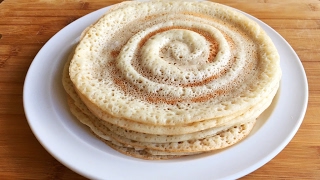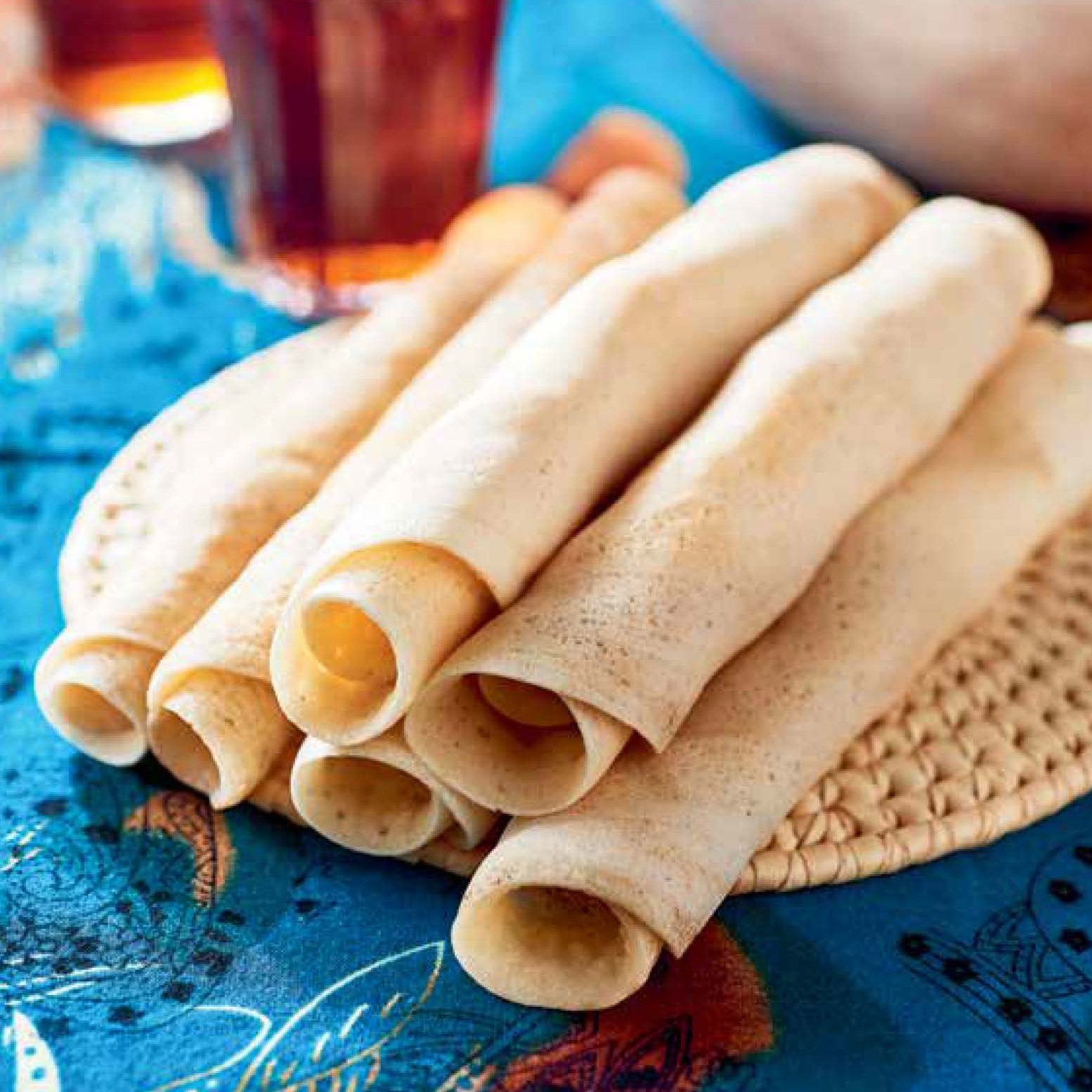
Anjeera Somali: The Breakfast Staple and its Varied Traditions

Anjeera, also known as Canjeero, is a beloved breakfast staple in Somali households, deeply embedded in the country’s culture and daily life. This spongy, fermented flatbread is commonly eaten in the morning and plays an essential role in Somali culinary traditions.Eating Anjeera in the morning is a practice shaped by both its nutritional benefits and cultural significance. It is light yet filling, providing enough energy to sustain a person throughout the day. Made from flour—typically wheat or sorghum—it undergoes a fermentation process that enhances its nutritional value, making it easy to digest and rich in nutrients. Its preparation overnight allows for quick serving in the morning, making it a convenient option for busy households.Somali people enjoy Anjeera in various ways, reflecting the dish’s versatility. One of the most popular methods is to eat it with sesame oil and sugar, giving it a slightly sweet, nutty taste. For those with a sweeter palate, honey or jam is often spread on top, offering a delightful treat. On the other hand, a more savory option involves pairing Anjeera with suqaar, a flavorful meat dish made with diced beef or goat, onions, and spices. This version is heartier and perfect for those needing more sustenance.Another traditional way of eating Anjeera is with yogurt, sometimes sweetened with a bit of sugar. The combination of the tangy yogurt and the soft bread makes for a refreshing breakfast, especially enjoyed in hotter regions of Somalia. In some families, Anjeera is served with subag (Somali ghee), which adds richness and depth to the flavor, making the meal even more indulgent.In addition to these variations, many households season Anjeera with spices like cinnamon, cardamom, or cloves, adding warmth and aroma to the dish. These spices not only enhance the flavor but also carry cultural importance, as they are linked to traditional Somali healing practices and are often used in special dishes.Anjeera is more than just food; it is a central part of Somali hospitality. When guests visit, especially in the morning, it’s common to serve them Anjeera alongside a cup of Somali tea (shaah). This act of sharing food is a gesture of warmth and friendship, reinforcing the sense of community that is so important in Somali culture.Beyond its role as a meal, Anjeera symbolizes tradition, connection, and the everyday rhythms of Somali life. Its simplicity, versatility, and deep cultural roots make it a cherished part of breakfast routines across the country. Whether enjoyed sweet, savory, or with a special touch of spices, Anjeera remains a timeless dish that connects generations and brings people together.Anjeera, also known as Canjeero, is a beloved breakfast staple in Somali households, deeply embedded in the country’s culture and daily life. This spongy, fermented flatbread is commonly eaten in the morning and plays an essential role in Somali culinary traditions.Eating Anjeera in the morning is a practice shaped by both its nutritional benefits and cultural significance. It is light yet filling, providing enough energy to sustain a person throughout the day. Made from flour—typically wheat or sorghum—it undergoes a fermentation process that enhances its nutritional value, making it easy to digest and rich in nutrients. Its preparation overnight allows for quick serving in the morning, making it a convenient option for busy households.Somali people enjoy Anjeera in various ways, reflecting the dish’s versatility. One of the most popular methods is to eat it with sesame oil and sugar, giving it a slightly sweet, nutty taste. For those with a sweeter palate, honey or jam is often spread on top, offering a delightful treat. On the other hand, a more savory option involves pairing Anjeera with suqaar, a flavorful meat dish made with diced beef or goat, onions, and spices. This version is heartier and perfect for those needing more sustenance.Another traditional way of eating Anjeera is with yogurt, sometimes sweetened with a bit of sugar. The combination of the tangy yogurt and the soft bread makes for a refreshing breakfast, especially enjoyed in hotter regions of Somalia. In some families, Anjeera is served with subag (Somali ghee), which adds richness and depth to the flavor, making the meal even more indulgent.In addition to these variations, many households season Anjeera with spices like cinnamon, cardamom, or cloves, adding warmth and aroma to the dish. These spices not only enhance the flavor but also carry cultural importance, as they are linked to traditional Somali healing practices and are often used in special dishes.Anjeera is more than just food; it is a central part of Somali hospitality. When guests visit, especially in the morning, it’s common to serve them Anjeera alongside a cup of Somali tea (shaah). This act of sharing food is a gesture of warmth and friendship, reinforcing the sense of community that is so important in Somali culture.Beyond its role as a meal, Anjeera symbolizes tradition, connection, and the everyday rhythms of Somali life. Its simplicity, versatility, and deep cultural roots make it a cherished part of breakfast routines across the country. Whether enjoyed sweet, savory, or with a special touch of spices, Anjeera remains a timeless dish that connects generations and brings people together.

